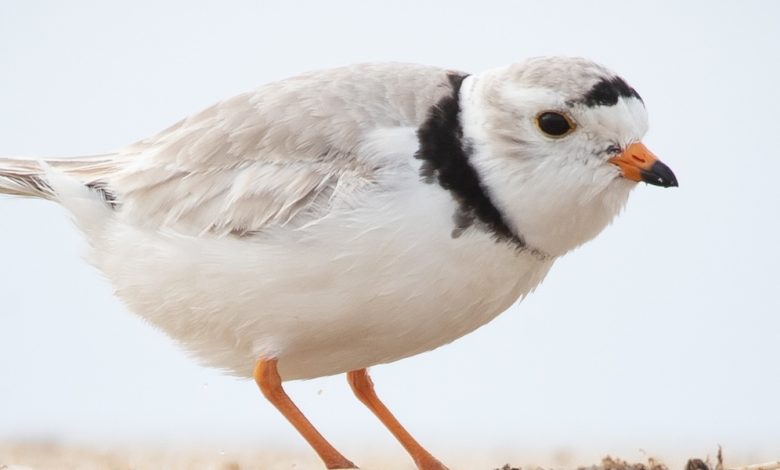Ms. Packer, Beloved Piping Plover Who Became Symbol of Species Recovery in Green Bay, Dies After Remarkable Conservation Journey

The conservation community is mourning the loss of Ms. Packer, a small but mighty piping plover whose unexpected return to Green Bay symbolized one of the most inspiring environmental comebacks in recent Wisconsin history. The beloved shorebird, named in homage to the Green Bay Packers, became a face for habitat restoration and a rallying figure in the fight to protect endangered species.
Ms. Packer died earlier this month at her natural breeding grounds along the western shore of Green Bay, leaving behind a legacy of resilience, environmental awareness, and hope for the continued revival of her kind.
A Symbolic Return
Piping plovers are small, sand-colored birds listed as endangered in the Great Lakes region. Once driven to near extinction by habitat loss and human disturbance, the birds disappeared from Wisconsin in the 1980s. For nearly three decades, no documented nests or returning birds were spotted along the shores of Green Bay.
Then, in 2016, the improbable happened.
A lone female piping plover—later tagged and affectionately named Ms. Packer—was spotted nesting on a carefully restored beach near the Cat Island Chain in Green Bay. Her arrival shocked and thrilled conservationists who had worked for years to rebuild wetlands and protect shorelines in the region.
The name “Ms. Packer” was coined by local biologists both as a nod to the local NFL franchise and a tribute to the bird’s endurance and teamwork-like spirit. Her presence immediately transformed her into a local celebrity and symbol of a successful collaboration between conservation agencies, nonprofit organizations, and community volunteers.
A Conservation Victory
Ms. Packer’s arrival was no accident, but rather the result of years of painstaking environmental recovery efforts. Starting in the early 2000s, the Wisconsin Department of Natural Resources (DNR), U.S. Fish and Wildlife Service, and regional partners began restoring critical shorebird habitat that had been decimated by decades of development, erosion, and pollution.
The Cat Island Restoration Project, funded by both public and private sources, reconstructed over 200 acres of coastal wetland habitat—ideal nesting territory for piping plovers. This work involved rebuilding barrier islands using dredged material from the Fox River and rerouting public access to minimize disturbance.
Ms. Packer was one of the first documented piping plovers to reclaim this newly available nesting ground. In the years following her debut, she successfully hatched multiple broods, helping to bolster the fragile population of her species.
“She was the bird we dreamed would come,” said DNR ornithologist Matt Reetz in an interview following the news of her death. “Ms. Packer gave us tangible proof that what we were doing was working—and that we could bring a species back from the brink.”
A Community Icon
Ms. Packer’s influence extended beyond biology. She quickly became a symbol of hope for educators, schoolchildren, and citizens throughout the region. Wildlife enthusiasts traveled to the Green Bay shoreline in hopes of spotting the feisty plover, who was known to stand her ground against larger birds or wary humans who strayed too close.
Schools incorporated her story into environmental curriculum. Conservation groups used her image in fundraising campaigns. Even the Green Bay Packers got involved, offering social media shoutouts and sponsoring educational signage at key observation sites.
“Ms. Packer gave people a reason to care about conservation,” said Rachel Jordan, a member of the Northeastern Wisconsin Audubon Society. “She wasn’t just a bird—she was a reminder that nature can bounce back if we give it a chance.”
Her Final Season
In the spring of 2025, Ms. Packer returned once again to the Cat Island nesting area, marking nearly a decade of successful migrations. Though older and visibly more worn from her many journeys, she remained active, feeding and defending her nesting zone with the same alertness that first drew attention to her presence.
But by late June, biologists monitoring the area noticed a sudden change in her behavior. Ms. Packer was spotted resting frequently and showing signs of fatigue. Wildlife staff kept a close eye on her, ensuring she was safe and undisturbed, but on July 14, she was found lifeless near her last nesting site.
Preliminary necropsy reports suggest she died of natural causes, likely due to age-related decline. Piping plovers typically live for 5-7 years in the wild, but Ms. Packer had already surpassed that range, believed to be at least 9 years old—making her one of the longest-surviving documented members of the Great Lakes population.
A Lasting Legacy
Though her death is a loss for those who followed her journey, Ms. Packer’s life continues to make a difference.
Since her first nesting season in 2016, the number of piping plover pairs returning to Green Bay has steadily increased. In 2024, biologists recorded six nesting pairs in the Cat Island and Point au Sable areas—still modest numbers, but a significant improvement over zero a decade earlier.
She also played a role in regional awareness efforts, prompting municipalities to create bird-friendly lighting ordinances and enhance shoreline protections. Thanks to her influence, the area around Green Bay is now seen as one of the best comeback stories in Midwest conservation.
In honor of her contributions, the Wisconsin DNR announced plans to name a viewing platform along the shore after Ms. Packer. A life-sized sculpture of a piping plover will be installed at the site, with interpretive signage telling the story of her remarkable life and the broader effort to save her species.
Remembering Ms. Packer
Tributes have poured in from environmental groups, local residents, and conservationists across the country. Social media users shared photos of her over the years, tagging posts with hashtags like #MsPackerForever and #PloversMatter.
“She defied odds. She reminded us what’s possible,” wrote one Twitter user. “Goodbye, little bird. You’ll always be a giant in our hearts.”
National Audubon Society president Elizabeth Gray released a statement saying, “Ms. Packer’s journey proves that when communities unite for conservation, the results can be extraordinary. She wasn’t just a piping plover—she was a pioneer.”
And for many in Green Bay, she was a neighbor.
“You’d go out in the morning, and there she was, pecking around like she owned the place,” said local volunteer birder Hank Mueller. “She taught us to pay attention—to the shoreline, to each other, and to what’s worth protecting.”
Looking Forward
Ms. Packer may be gone, but the effort to restore piping plover populations continues. With federal protections still in place, and ongoing partnerships between agencies and local groups, there’s hope that the small, sandy-colored birds will thrive along Lake Michigan for generations to come.
“We owe it to Ms. Packer to keep fighting,” said Reetz. “To keep rebuilding, educating, and advocating—for her, and for all the species that need our help.”
As summer continues on the shores of Green Bay, the waves still lap at the restored beaches where she once nested, and the winds still carry the sound of gulls and terns. Somewhere, perhaps, a young piping plover born of her lineage is preparing for its first migration, following instincts passed down from a trailblazer.
A trailblazer with a name, a legacy, and a heart that beat for a better world—Ms. Packer.









